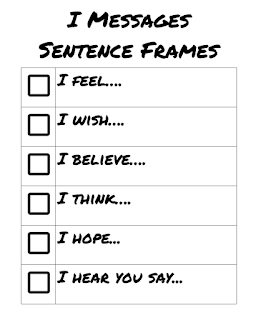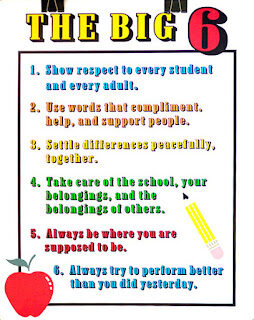5 Meaningful Ways to Manage Conflict in the Classroom
 Mike Myatt (2012) warns managers “Don’t Fear Conflict–Embrace it-it’s your job”. Teachers must adopt the mindset that conflict is natural and healthy part of your job. Rather than perceive conflict as a impediment for teaching it should be viewed as an opportunity to develop your practice and for all to grow. Perhaps then conflict would be confronted in a much more productive way and become in itself a teachable moment where all stakeholders can benefit.
Mike Myatt (2012) warns managers “Don’t Fear Conflict–Embrace it-it’s your job”. Teachers must adopt the mindset that conflict is natural and healthy part of your job. Rather than perceive conflict as a impediment for teaching it should be viewed as an opportunity to develop your practice and for all to grow. Perhaps then conflict would be confronted in a much more productive way and become in itself a teachable moment where all stakeholders can benefit.
Myatt (2012) also shared with managers 5 keys of dealing with workplace conflict which I will restate with a teaching lens
1). Define Acceptable Behavior: Teachers need to make PUBLICLY clear what their expectations are and what is acceptable behavior. Myatt notes that manager can not assume that people understand what is acceptable and should establish a framework. Teachers likewise will also benefit from having clearly posted guidelines and expectations defined and simplified. Expectations can be sent home and signed by parents and students.
2) Hit Conflict Head On: Teachers just like managers need to seek out areas of potential conflict and devise strategies to intervene and circumvent disruptive behavior. An ounce of behavior is worth a pound of cure. Remember the younger the student the less likely they are to have strategies to resolve conflict appropriately. Take a copy of my Sentence Starters for helping students articulate their ideas.
3). Understanding the WIIF Factor: The WIIF factor is “Whats in it for me” is important for teachers to consider when managing disruptive classroom behavior. Rather than approach a situation from the lens of I can’t do my job because you are being disruptive, approach the student from the stance of what the benefit is for the student. If students see the value in what they are doing and how it will help them then they will be motivated to do the task.
4). The Importance Factor: Timing is everything and when we respond to conflicts in the moment this may cause us to act out of character or out of emotion. Determining when to pull a student aside to discuss an issue is critical, but also teachers need to think critically about whether a potential conflict can be ignored. If students are constantly being redirected for behavior they can not control this can cause an uncomfortable dynamic in your personal relationships. Having ten minutes set aside for students to work independently and for you to speak to students individually is critical.
5) View Conflict as Opportunity: This is especially true for teachers as conflict in the classroom reveal areas for growth and ways we can support our students in being successful not only in the classroom but throughout their life.

Preservice teachers can certainly benefit from addressing potential conflicts they will face as new teachers in the classroom.
In this Voicethread post I challenge my students to respond to these 3 situations in a way that is proactive and seeks solutions that develop students’ capacity to manage their own behavior. https://voicethread.com/app/player/?threadId=7174443






